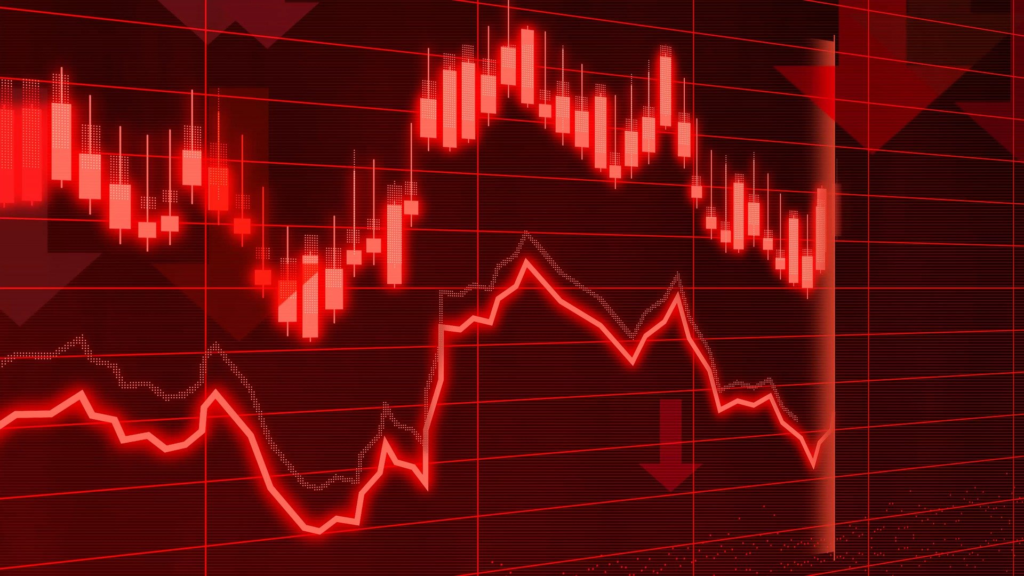Definition of The Great Recession: The economic downturn stretching from 2007 – 2009, which featured a global reduction in GDP, the collapse of several banks, a tightening of consumer spending, and increased systemic financial risks.
What is The Great Recession?
The term ‘The Great Recession‘ is coined to mirror ‘The Great Depression‘ of the 1930’s which was primarily felt in the United States. The Great Depression was more severe in many respects, but the recession of the 2007 – 2009 period is widely recognised as the most devastating economic collapse ever since.

You’ll find that the best economics books published since 2011 refer to the Great Recession to bring their principles to life, as this period of time saw many extreme economic events play out before our eyes.
A brief timeline of the great recession
The Great Recession was triggered by ‘The Financial Crisis’ – a banking crisis which affected mainly US and European banks.
It began with the collapse of the sub-prime mortgage market in the US, which triggered billion-dollar losses on subprime mortgage assets. These bad loans had often been repackaged and sold within collaterised debt obligations (CDOs) which other banks had bought on the invalid assumption that these were low risk.
The large losses sparked a chain reaction, fuelled by a collapse in confidence in the ability for some major banks to survive. Lending between banks (and consumers) ground to a halt. In the UK this was known as ‘the credit crunch’.
This tightening of credit led to further downward pressure on the property market, with house prices falling in many developed economies after a decade of sustained rises.
Consumer spending also fell sharply, as workers opted to save their wages. This depressed demand for large ticket items such as cars and sofas. This led to a drop in business activity which sparked mass layoffs. Unemployment rose.
Governments participated in high profile financial interventions. The US Government bailed out auto manufacturers and mortgage providers. The UK government part-nationalised Lloyds Bank.
This co-ordinated action reduced fear of an existential crisis in banking and laid the groundwork for an end to the crisis. Not all large businesses were deemed ‘too big to fail’. Lehman Brothers, an American investment bank, was notably allowed to become bankrupt, causing billions of dollars in losses for investors and creditors during its subsequent liquidation.
Take a look at investing books such as The Big Short offer an interesting perspective on the chain of events which led to this economic catastrophe.
The long-term impact of The Great Recession
The Great Recession had several lasting effects:
New banking regulations increased the requirements for capital which banks must hold to protect themselves from a fall in the value of their risk assets.
Those banks which are labelled as ‘too big to fall’ find themselves subject to tighter scrutiny than before.
Governments created or dramatically improved their deposit guarantee schemes such as the UK’s Financial Services Compensation Scheme. These schemes see the government effectively back any deposits saved with a bank which goes bust. Although these schemes were created to plug a gap in confidence during the height of the financial crisis, they remain in place today.
How is the phrase The Great Recession used in a sentence?
“Since The Great Recession, banks have been warier when making unsecured loans or debentures.”
How does the definition of The Great Recession relate to investing?
The Great Recession was accompanied by a sizeable stock market crash. Those who had bought shares in the lead up to 2007 may have seen losses of up to 40% even on a diversified investment portfolio.
Some investments, such as investments in gold, long-dated government bonds, and forex trades involving Swiss Francs, performed well during the crisis as investors moved from risky asset classes to perceived ‘safe havens’.
This crash serves as a recent reminder of the severity of losses which can be incurred when investing in property and shares. Real Estate Investment Trusts (REITs) such as British Land saw price falls of 75% between 2006 and 2008.
This is why in our Foundation investing course, I explain why it’s crucial for investors to invest in accordance with their risk tolerance and their time horizon.